The Island’s Winery Alliance to Host Labor Day Tours
August 31st, 2015
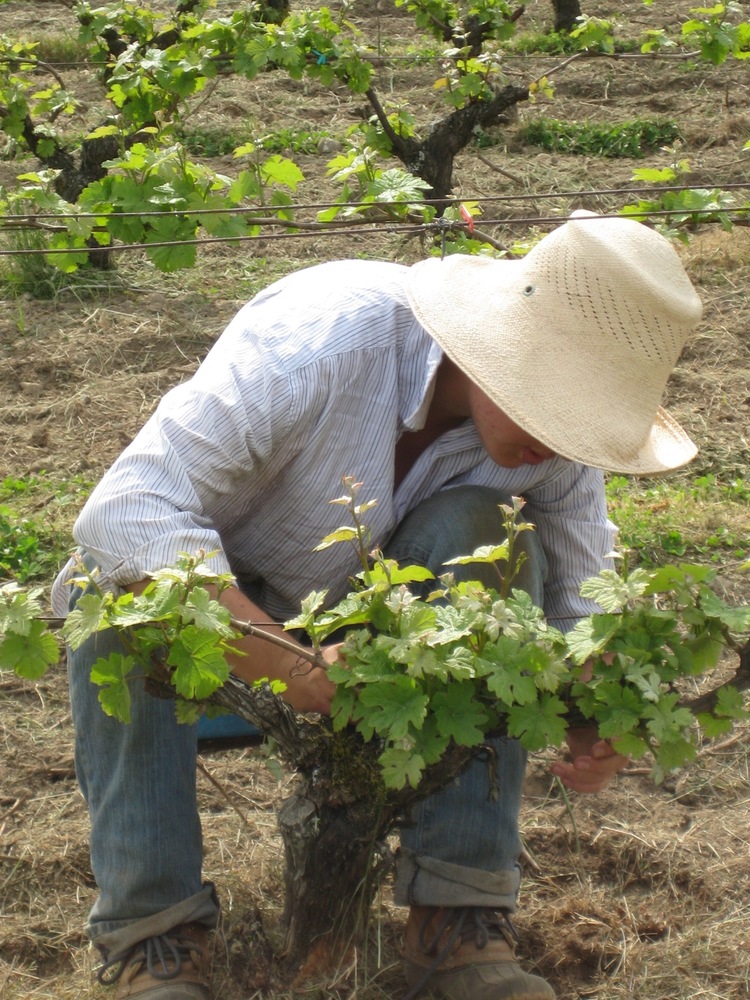
Contributed by Christine St.Pierre
This Labor Day, consider avoiding the wildfires and staying home to experience the Winery Alliance of Bainbridge Island’s Winery Tour Weekend, September 5–7, from noon to five o’clock PM. Seven wineries and one tasting room present wine procured from grapes grown within the island’s maritime climate as well as the east side of the Cascade mountains. These small and quaint wineries are earning big awards, and the vintners and viticulturists will be present during the tastings to welcome you and discuss all things vino. Take a loved one or two along for the ride, although avoid large groups as these tasting rooms are island-sized. After the clock strikes five, regroup with your friends and neighbors at one of the island’s restaurants to pour over your experiences from the day!
The Winery Alliance of Bainbridge Island (WABI), which began in 2003 at the hands of winemaking fanatics, consists of seven independent micro-wineries living right on our patch of rock. These wineries are run by their winemakers—individuals who are gifted with the ability and driven by the passion to create award-winning, vibrant handcrafted wine. Without relying on heavy machinery and thousand-barrel batches, these wineries operate through simply designed artisan systems, as well as uncomplicated, community-driven supply sources—like uber-local grapes—and neighborly distribution.
WABI consists of the following seven wineries that will be participating in the Winery Tour Weekend over Labor Day, as well as the Island Vintners tasting room:
Amelia Wynn Winery: This winery, founded in 2008, features Bordeaux, Rhone, and Northern Italian wines from grapes sourced from Eastern Washington’s aged vineyards.
Bainbridge Vineyards: With land stewardship dating back to 1928, this vineyard’s maritime bioregion—similar to that of France and Germany—works wonders for the seven acres of grape varietals grown on site at the Day Road Farm.
Eagle Harbor Winery: A commitment to honoring and furthering winemaking in Washington State has this winery producing new-age wine influenced by old world styles.
Eleven Winery: This off the cusp, sustainable (yes, green!) winery not only produces a variety of fantastic wine, but is run by wonderfully loving people who great things, like donate all after-tax profits to charity as well as sit-down food pairings with the winemaker.
Fletcher Bay Winery: Located in the happenin’ Coppertop Business Park, this winery features French Bordeaux-style wine that incorporates Italian Sangiovese and Spanish Tempranillo grapes.
Perennial Vintners: In 1997, Perennial Vintner’s (PV) winemaker began experimenting with winemaking, but it didn’t take him long to realize that most of winemaking truly happens in the vineyard, and so began the 2005 conception of (PV), producing estate-grown dry white wine from the underappreciated Melon de Bourgogne grape.
Rolling Bay Winery: After many years of playing and exploring within winemaking, a group of friends and wine enthusiasts settled in rocky Rolling Bay nearly a decade ago to handcraft fantastic wine as well as a stunningly beautiful tasting room, both of which have been considered one of the “Top 22 Tasting Rooms in Washington” by the Seattle Met.
A Superdrought Emergency, $16 Million in Relief Funds & El Niño
August 20th, 2015

Contributed by Christine St.Pierre
According to NASA, 2014 was the hottest year on record—crops died, land dried, rivers shriveled, and we began feeling the effects of a dry heat that many have never experienced before. But, as I write, I am gazing at a disheartening portion of Mt. Shuksan’s pristine, ice-blue glaciers that have receded into the dark hollows of the mountain’s rocky core, and, next to her, Mt. Kulshan’s (Baker) famed powder looking more like the slushy shoulder of a highway during a Chicago winter—murky from the soil and rock moving beneath the rapidly melting snow—and I wonder what NASA’s records will reveal about 2015’s state of emergency on both the land and sea.
Over the winter, I taught an English lesson on satire to the 2015 graduates of Nooksack Valley High School, located north of Bellingham. The lesson preceded the area’s 93-mile “Ski to Sea” multi-event relay race that traditionally begins with skiing down the slopes of Mt. Kulshan (Baker) and ends with sea-kayaking Bellingham Bay. This year was the first in the 100 year history of the event that was forced to eliminate the ski portion altogether due to an extreme lack of snow. The students resonated with the lesson on satire, creating satirical headlines about the Patriot’s shoddy Superbowl win (“The Deflate-riots”), a search for the new Pope (“The first black, female Pope, Poprah?”), and, with unfortunate poignancy and relevance to the lives of these snowbird seniors, headlines like “Surf Mount Baker!” and “Surf to Sea!” Witnessing these warning signs as early as February frightened me, but I had no idea what terrifying drought conditions would we face in Washington State, on the entire west coast, throughout much of the Midwest, and across the entire globe.
In May of this year, Gov. Jay Inslee declared a statewide drought for Washington for the first time since 2005, following the historic lows of the winter’s snowpack, dwindling river levels that threaten fish populations (not to mention increased temperatures in the shallower river water), and irrigation districts cutting off water to farmers in eastern Washington, an area greatly affected by the rain shadow of the Cascades. Declaring drought for Washington state must meet two criteria: the state must be experiencing or expected to experience a 75 percent reduction in water supply and consumers of this water will experience hardships due to this lack of water.
By May, Washington had already experienced an 82 percent reduction in water supply. The State Dept. of Agriculture predicts a $1.2 billion crop loss this year as a result of the drought, according to the Dept. of Ecology. The Olympic Peninsula is experiencing high-elevation wildfires and the bloom of glacier lilies, where, normally, there is seven feet of snow. “This drought is unlike any we’ve ever experienced,” said Washington Department of Ecology Director Maia Bellon on their website. “Rain amounts have been normal but snow has been scarce. And we’re watching what little snow we have quickly disappear.”
In August, state legislature approved the reallocation of $16 million dollars toward drought relief work, including the support of stream flows for fish, water supplies for farmers, and grant money for cities, counties, and tribes to develop alternate water sources and purchase or lease water rights for the 2015–17 biennium. This approval arrived just in time to address the seriously scary possibility that this year’s El Niño could be the most extreme in history, making for a difficult recovery over the next few years.
El Niño, associated with dry winter and spring conditions, is upon us. In order for this rare and complex climate event to take place, three things must occur simultaneously: eastern trade winds weaken, sea temperatures rise, and the southern oscillation index must be -7 or below (which it has been since 2014). To spare you a layman’s description of what scientists expect to be a “Godzilla” El Niño, I’ll sum it up briefly: trade winds across the Pacific Ocean weaken, releasing a pocket of warm water near Indonesia that travels eastward, then sinks along with the thermocline, which means less cold water is rising up from the deep ocean near South America, reducing rain much of southern hemisphere. For we on the west coast, rain tends to follow the warm pool of water—although, this year, scientists aren’t too sure it can end the drought. In addition, heavy rains after a drought can bring upon heavier mudslides and floods.
It’s a lot to accept all at once — Central California looks like the post-apocalyptic set of Mad Max, Oregon’s on fire, and Washington’s land and rivers are shriveling in the heat. We’ll see what the weather brings to us throughout the rest of the year, but we can’t regrow glaciers in our lifetime or turn back the clock. Things — “they are a changing.”
Navigating Washington’s Vibrant Summer Festival Scene
August 14th, 2015
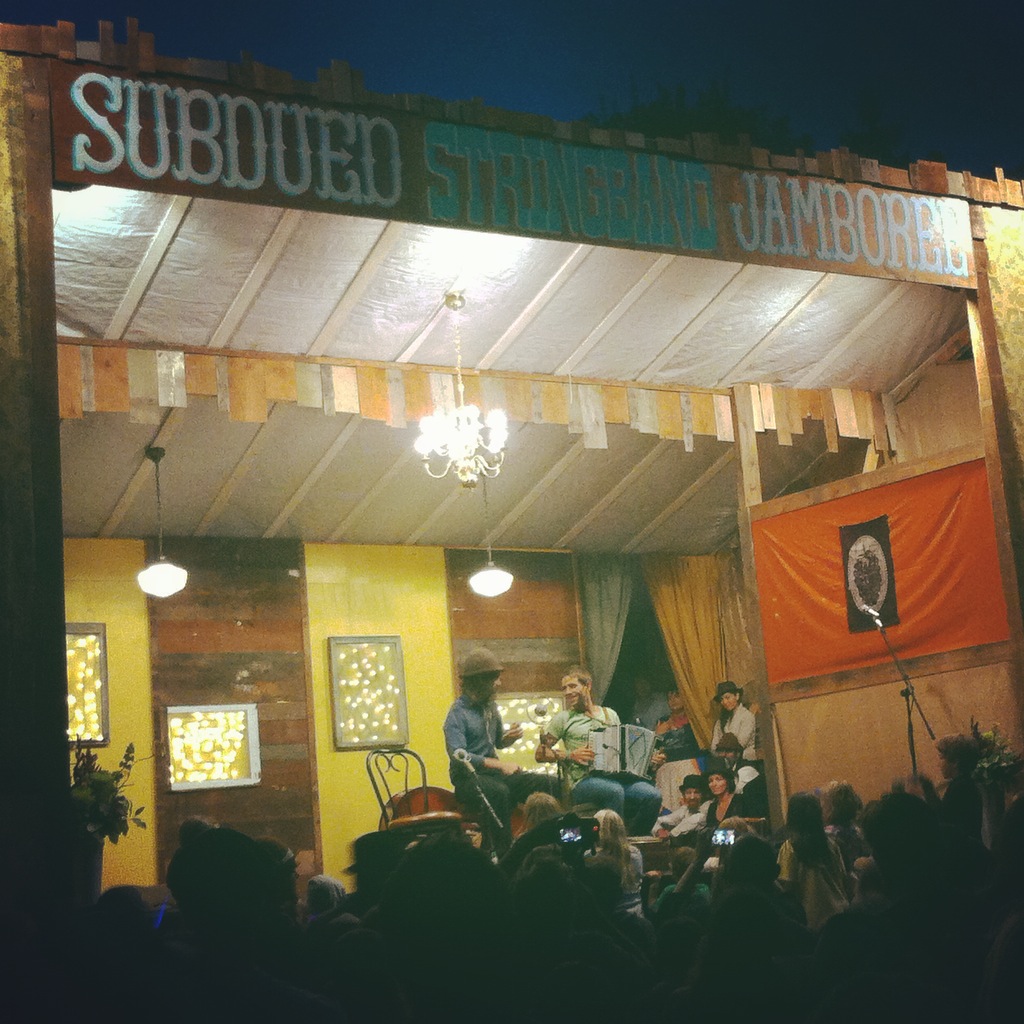
Summer in western Washington is certainly a most cherished season, offering extra hours of warm sunshine to stay and play a little longer. Maybe you’re backpacking the Cascades or Olympics, where you’re guaranteed mind-blowing vistas of glacial lakes, sprawling ranges, blossoming wildflowers, juicy berries and rogue fruit trees, mossy waterfalls, clear ocean views, and quiet nights filled with stars. Unless, that is, you’re sailing through the San Juan islands, meandering through the various canals and passages while on the lookout for resident orca pods safeguarding their newest calves.
Fortunately, summers in western Washington also offer the perfect combination of entertainment, community, and the great outdoors: a host of out-of-this-world music festivals put together by teams of folks who seem to really “get it.” Festivals like Seattle’s Bumbershoot, Bellingham’s Subdued Stringband Jamboree, and the ever-popular Summer Meltdown offer choice, escape, and an opportunity to bust out your tent and sleep beneath the trees after sunny days filled with music, art, food, spirits, and, well, spirit.
The only problem? Choosing which festival(s) to attend. With a collection of festivals offered in nearby Oregon, such as the bluegrass junkie’s pilgrimage to Northwest String Summit (July 16–19) or this year’s 150th bizarre and buoyant Oregon State Fair (August 28–September 7), it can all be a bit overwhelming. Allow me to breakdown and build up Washington’s greatest festivals to make next year’s decision-making a bit easier.
Summer Meltdown – Darrington, WA – August 6–9
“Where the music meets the mountain.” This music festival is kind of a big deal, and with a slogan like that, how can you resist? The Meltdown’s far-reaching, multi-genre lineup is big, featuring headliners such as electronic gurus STS9, sunshine reggae Iration, foot-stomping Greensky Bluegrass, and jazz-funk fusion Galactic, and real-talk music from Nahko and Medicine for the People. Bring your kids, bring your friends, bring your sweetheart, or come alone and fill your days with ultra-positive vibes and maybe a few workshops like the “Artist Talk” with installation artists or “Crafting Wearable Light” leaving you with vibrant, LED origami shapes. You may want to leave the kiddos in good hands for the late-night shenanigans, though, because when the sun goes down, things really start to heat up. Late-night tents feature DJs, string bands, and dance parties well into the morning. You’re sure to leave Summer Meltdown exhausted from the smiling, dancing, and singing, and filled to the brim with memories to last a lifetime.
Subdued Stringband Jamboree – Deming Log Show Fairgrounds, Bellingham, WA – August 6–8
“When it’s blackberry time in Bellingham, it’s Jamboree time for me!” chanted the crowd during local band Hot Damn Scandal’s damn hot Saturday night set to wrap-up an enchanted weekend in the forests just outside of town. This year’s 15th annual Jamboree was a portrait of all of the magic that an incredibly proud, creative, and dedicated community can cultivate when given a county fairground, hard-working (and free-working) hands, and the creative talents of not only a long list of eccentric and exciting musical groups, but also the many visual artists who created stages, tents, and aesthetic reminiscent of a Wes Anderson film, with draping lights and dripping fabrics, theater-esque stage décor, and a modern-carnival vibe. This festival is a must—an absolute must—if you’re interested in taking a peek into the wild and wondrous minds of traveling musicians, rambling artists, and Bellingham’s finest.
Bumbershoot – Seattle, WA – September 5–7
If you’re a resident of Washington, you’ve heard of Bumbershoot. As one of Seattle’s largest cultural celebrations, featuring comedy, theater, visual arts, dance performance, and film in addition to a wildly pronounced musical lineup. This year, the festival’s headliners include soulful Ben Harper & The Innocent Criminals, dub step kingpin Bassnectar, flannel-clad Built to Spill, Chance the Rapper, ambient Devotchka, bluegrass whisperers Elephant Revival, soulful Grace Love and the True Loves, profound Hozier, and the beloved Neko Case, to name only a few of their A-Z lineup of big names, diversity, and range. You might not have a mountain range as your backdrop or a cozy tent to curl up in at the end of the night, but for the love of music—call your friends, crash on couches, and bring a light jacket, because Seattle’s Bumbershoot is the place to be during Labor Day Weekend.
Brown Haze… Cough, cough, cough…
July 9th, 2015
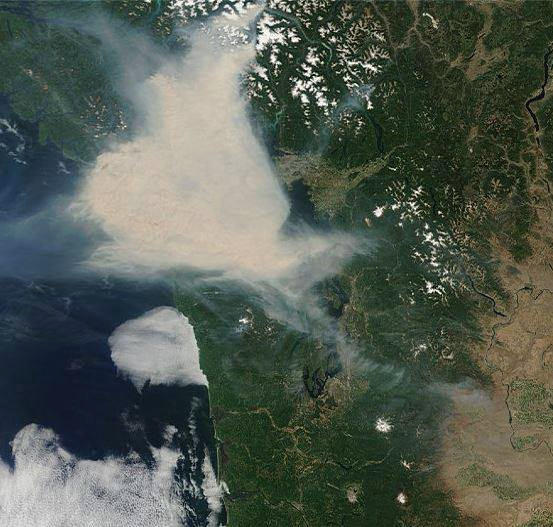 Image Courtesy of the National Weather Service
Image Courtesy of the National Weather Service
Post contributed by Christine St. Pierre
During this incredibly dry, hot summer, brown is the new green for forests, gardens, and fields in the Pacific Northwest. Wildfires are ravaging parts of Canada and patches of Washington state, leaving the whole of the upper left—and other northern parts of the country—choking on its smoke.
Considering the incredible drought and an apocalyptic conflict over water rights in California, it comes as no surprise that Washington, Idaho, Oregon, California, and Western Canada are also experiencing hotter-than-usual temperatures. But, wildfires in the wettest region of the country have many on alert, wondering what this could mean for the future in regards to climate change. Following an unusually dry winter with miniscule snowfall in Washington’s famous ski destination, Mt. Baker, these traveling wildfires are cause for alarm.
In Canada, tens of thousands of acres are burning, from the dry, flat central provinces of Manitoba and Saskatchewan (north of Minnesota and North Dakota) to British Columbia. Currently, urgent evacuations are underway in Saskatchewan. Many U.S. citizens have posted photos of a smoky haze over the Twin Cities of St. Paul and Minneapolis, triggering air quality alerts that urge limitation of outdoor activities, particularly for those affected by smoke or other contaminants in the air, particularly the very young and elderly. In Washington, the smoke has reached as far south as Vancouver, just north of the Oregon border.
According to Canadian officials, nearly 90 wildfires are currently being battled in British Columbia alone, claiming 77 square miles of Whistler, best known for its legendary skiing and snowboarding. In Washington and Oregon, firefighters are working to contain 21 wildfires. The “Paradise Fire” continues to rage on in the Olympic National Park, with many others scattered across the state. Recently, an increase in fires follows Fourth of July fireworks shows, particularly for Lake Whatcom in Bellingham, where a small fire continues its slow march. Spontaneous fires reported along I-5 in the Seattle area are thought to have been caused by cigarette butts.
This summer, do you part in minimizing the potential spread of wildfire in our normally luscious Pacific Northwest. Refrain from using fireworks, setting fires near the wilderness (particularly with dry leaves), and have your vehicles checked for functioning spark arresters before heading into the forests. Now would be a great time to consider cutting the habit of smoking, or get in the habit of throwing your cigarette butts in the garbage. It’s our responsibility to prevent human-caused wildfires! Be sure to report alarming and potentially hazardous behavior to local authorities.
“Shell No” – One Activist’s Views
July 2nd, 2015
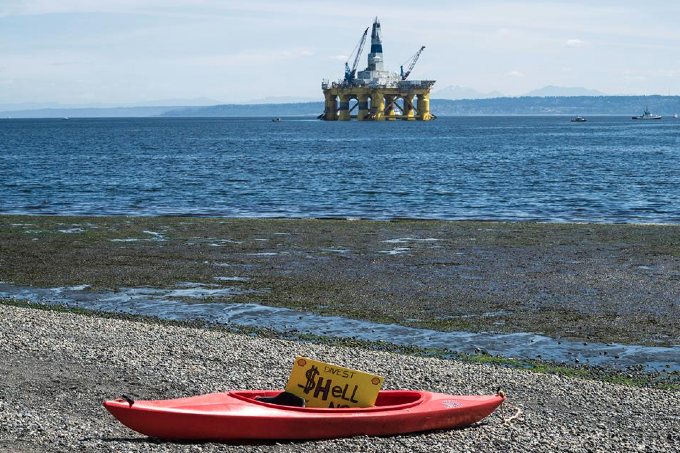
By Christine St. Pierre Photo by Linda Wolf
“Don’t like Shell’s ice cold views on global warming?” “How much does a polar bear weigh? Enough to break the ice!” “You seem like you enjoy vacationing on the beach. Save the beaches!” “Does your little one love snacking on fish sticks?” “Ever seen Waterworld? Let’s make sure that doesn’t become our reality.”
Years ago, I used dozens of these catchy, shallow one-liners to draw peoples’ attention to me, the 5’ 3’’ Greenpeace canvasser standing in the pouring rain on 4th and Pike with a clipboard and the determination to get you to join the ranks of others who wish to keep Shell out of the arctic. In a perfect world, I could have looked you in the eyes, reached my hand in your direction, and said, “Shell oil plans to drill for fossil fuels in one of the most wild, hostile environments on Earth,” or, “One isolated oil spill endangers the Indigenous communities and species thriving in the arctic ocean, as well as the entire planet,” or maybe, as actress and activist Jane Fonda recently pleaded at a rally in Seattle, “This is the fight of our lives.”
But the world is not perfect, and, statistically, using corny one-liners provokes you to stop and talk with people like me much more frequently then us shouting, “Did you know 13% of the planet’s undiscovered oil is thought to rest beneath the Arctic Ocean? Seems like a lot! But at our current rate, that’s only three years of consumption! Is that worth irreversible environmental devastation?”
Why? Because you don’t want to be bummed out, confronted, shocked—because you’re on vacation or a quick lunch break or you would rather go home and research this issue on your own. More often than not, you’ll keep walking, shouting an apology that grows fainter with every footstep. And, more often than not, you won’t research more at home. You’ll forget about what I said, why I was standing there. But eventually, inevitably, we’ll find ourselves standing side-by-side on the frontlines of one of the most threatening capitalist schemes in human history.
The movement didn’t start with Greenpeace or me or you; it has been happening for decades: we the people are silenced while fossil fuel lobbyists and greedy politicians shake hands in the crooked corridors of DC, sending fleets of oil rigs into heavily populated, pristine environments, causing massive disasters like the 1989 Exxon Valdez oil spill in Alaska or the 2010 BP Deepwater Horizon spill in the Gulf of Mexico. Many don’t believe their voices can be heard by the fossil fuel mafia or politicians who are positioned to hear our cries—that one person can’t make a difference. But if everyone believes that, then there is no movement—only surrender.
In 2013, provoked by massive people power, the federal government barred Shell from drilling in the Chukchi Sea following a series of accidents during exploratory drilling in 2012, i.e. Shell’s drilling rig Kulluk running aground off the coast of Alaska. The U.S. Coast Guard blamed this embarrassing uh-oh on “inadequate management and assessment of risks” in icy, storm-tossed waters, according to its final report on the accident. News spread about the operating rig pleading guilty to eight felony offenses and paying $12.2 million over falsifying records that would prove the oil rig outdated and unfit for such demanding conditions. Shell temporarily halted the project, and many of Shell’s executive staff publicly expressed doubts about the low financial reward of such a high-risk operation, which is why many were outraged at the Obama Administration for allowing Shell (of all companies) to drill for oil off of the Alaskan coast this year.
Aside from threatening the food supply and livelihood of the four-million people living in the arctic, many of whom, like the Inupiat, are Indigenous communities, along with the seventeen whale species, thousands of migrating birds, endangered polar bears and stellar sea lions, and other life depending on this delicate ecosystem, here’s why we should all be concerned:
• The area is extremely remote, with manic weather, icy waters, hurricane-force storms, sub-zero temperatures, endless winter darkness, and waves up to 50 feet in height. There are no service roads or deepwater ports for hundreds of miles, delaying rapid rescue and cleanup when (not if) an accident occurs. The closest Coast Guard equipped for responding to oil spills is stationed 1,000 miles away.
• It took BP three months to control its ruptured well in the Gulf of Mexico. A cleanup in the drilling areas in the Chukchi and Beaufort Seas boasts entirely different obstacles. The aforementioned extreme conditions threaten to prevent rescue access, freeze cranes, and deem oil dispersant chemicals useless.
• And then there’s the ice. A spill, detected or undetected, could spread beneath the surface of the ocean, traveling beneath ice flows hundreds of miles. There is potential for ice to become frozen in the oil within just four hours of exposure, where it could remain until the ice melts, whenever that may be.
• The successful drilling of vital relief wells, necessary for capping a ruptured well, could not be guaranteed in the drilling season’s few summer months before winter ice—and towering icebergs—returns.
• Shell claims it can clean up to 95% of spilled ice, a fantastical statistic considering the relative Exxon Valdez spill in Alaska which cleaned 9% of oil in 1989 and BP’s mere 17% in 2010. According to the US Geological Survey, 1-20% of Beaufort/Chukchi oil could be recovered.
Amidst a global movement to wean off of fossil fuels and redirect our focus on green and clean energy sources, a push to drill in hazardous, fragile waters for a small portion of energy is a giant setback. Recently, Seattle Mayor Ed Murray stood with activists and kayactivists amidst the port city’s positionality in the eye of the storm, “To prevent the full force of climate change, it’s time to turn the pages on things like coal trains, oil trains and oil drilling rigs. Its time to focus the economy on the future: electric cars and transit, green homes and environmentally progressive businesses.” The mayor and many Pacific Northwesterners have held strong in opposition against the presence and portage of Shell’s Arctic Fleet, including the drill rig Polar Pioneer. Folks have climbed it, blockaded it, and created a human flotilla in its path, but the fleet as begun its journey to Alaska.
Secretary of the Interior Ken Salazar has received hundreds of thousands of phone calls from people like you and me over many years of persistence opposition. The Obama administration has received letters written by entire nations, unions, organizations, and individuals pleading for a ban on arctic oil drilling. We’ve seen what people power can do: so far, we have succeeded in pushing the Obama administration to block the Keystone XL pipeline and create stronger regulations for coal-fired power plants. It’s not too late to match your voice with the countless others who can no longer sit idle while one of the last remaining frontiers of the Far North is plundered for money. Start by signing one or all of the online petitions linked below.
Stop Shell’s Dangerous Offshore Drilling Exploration in the Arctic
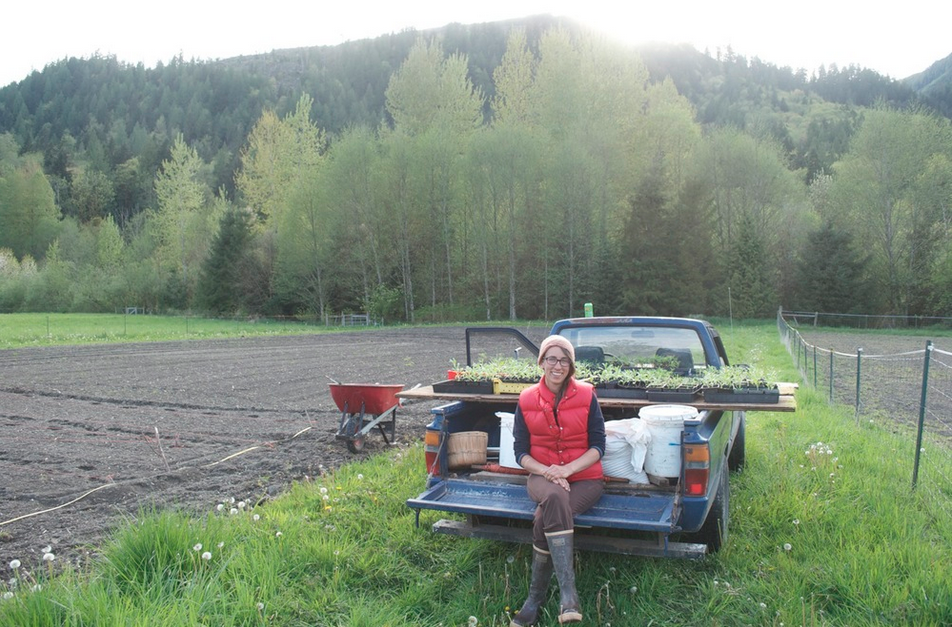
Peace and quiet enveloped me as I leaned against the doorframe of Sadie Beauregard and Paul D’Agnolo’s wooden yurt, one leg draped over the balcony’s edge, gazing down at the blueberry, raspberry, thimbleberry, and salmonberry bushes that the three of us had just harvested for the pie we would soon eat with their sweet neighbor Margot, a seventy year-old member of River Farm, an intentional community and cooperative farm located in Van Zandt, Washington. The two moved from farms on Bainbridge Island to the River Farm in December to begin a farm operation of their own, Foothills Flowers Farm—a far-off dream for so many.
Looking east from my perch in their elevated yurt, I took in a view of the Twin Sisters peaking over the forested foothills of the North Cascades, a beautiful backdrop to the resilient permaculture that the stewards of this Evergreen Land Trust have nurtured since a group of anarchists from Capitol Hill began the intentional community decades ago. Various walnut, apple, cherry, and plum trees provided shade for the rambunctious piglets romping around their grassy pasture. In the distance, the north fork of the Nooksack River carved along the property’s edge, encompassing the many small households, garden plots, pastures, trails, and groves within this Van Zandt paradise.
Seeking refuge from the early evening’s thick summer air, the three of us sat indoors, surrounded by textured bouquets of native flowers grown by the couple just a few hundred feet away, to be sold at various farmers markets. A John Prine record spun through the airwaves while we slow-cooked a blueberry and garlic scape-soaked salmon from the nearby rushing river, caught and gifted by a neighbor on the farm. This cooperative “what’s mine is yours” mentality is one of the many progressive concepts that drew Sadie and Paul into the sustainable farming community at various points in their life history.
The couple’s stories converged on Bainbridge Island while working for various farms and transformed into a shared desire to make the dream a reality: start a farming business, live sustainably, strengthen the farming community, and, ultimately, help to heal an ailing food system.
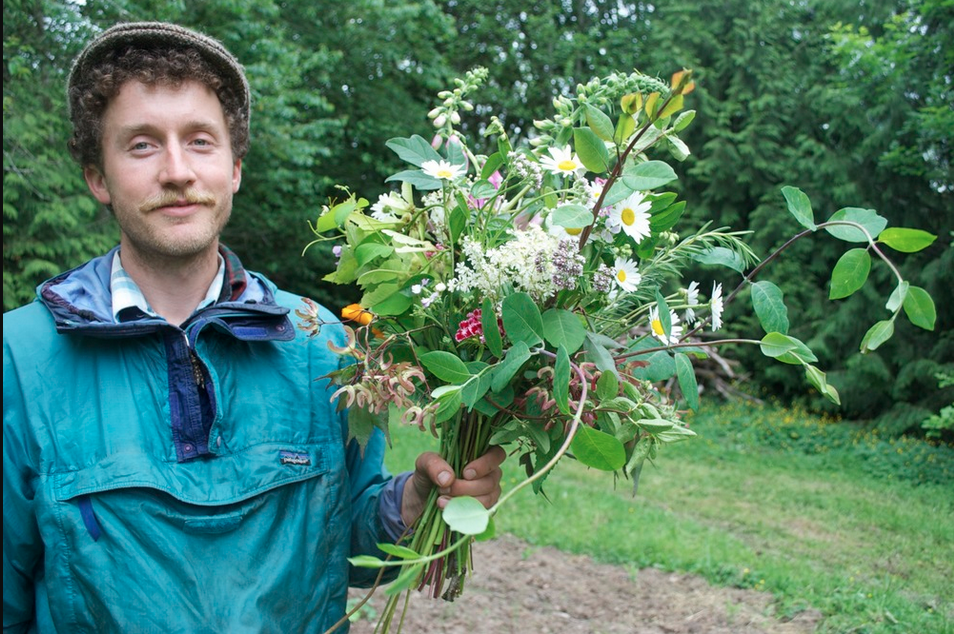
Paul, a Minnesotan, was turned off by his local farming community’s endless monocrop chemical agriculture that dominated the landscape, eventually farming on an island in Vermont’s Lake Champlain following a summer in Alaska. After an internship at Milwaulkee’s Growing Power, Paul traveled to California to work in the mountains looking for specific plants, eventually finding a home in Washington. Once in the Pacific Northwest, Paul wrote to his siblings in Minnesota, urging them to “quit their jobs, move west, buy a farm, climb mountains, catch fish, and be a family!” Within a year, the siblings were reunited, and five years later they continue to thrive. Paul expanded his farming experience, working at Seattle Tilth Farm Works in Auburn before eventually moving to the island to work with Symbiosis Food Cart and Bainbridge Island Farms, later moving to Butler Green. There, he met his “sweet Sadie beau” who has “been key in keeping [their] wandering way aligned with [their] hopes and aspirations toward owning a farm operation.”
Sweet Sadie, a moniker that so fully encompasses her tender nature, is a Vashon Island native who began this work five years ago after falling in love with farming during a year of urban gardening with AmeriCorps*VISTA in Seattle. After her service, Sadie took an internship at a small vegetable farm on San Juan Island, feeling like she “could farm forever.” She, like Paul, savors “the physical, hands-on nature of farming, as well as the opportunity to be outside and think creatively about growing, harvesting, and marketing.” Following her internship, Sadie was hired on at the island’s Persephone Farm where she “found flowers,” and flowers found her. There, she came to realize the importance and value of local flowers, seeing them akin to local food in that “conventional flowers are often grown with heavy chemicals by workers with poor working conditions and shipped hundreds of miles.” Eventually, her island farming career led her to work with both Heyday Farm and Butler Green, where she met Paul and found her best friend, a partner to build a farm with, to cook, hike, and laugh with “at all of the mistakes and triumphs we make along the way.”
With Paul’s brother operating Small Acres Farm nearby their now budding flower farm, Foothills Flowers, Paul and Sadie were able to partner their CSA operations for broader outreach. They have secured stands at the Fairhaven Farmer’s Market in Bellingham on Wednesdays, the Lynden market on Thursdays, and the Twin Sisters Market, which was created by fewer than ten local farms operated by young sustainable farmers, including Foothills Flowers.
This cooperative attitude is the tie that binds the farming community together. “We’re all broke, tired, struggling—but that’s what needs to change: the competitive attitude between farmers needs to turn into a cooperative one,” explained Paul. “The glimmers of light are where you and your buddies can help each other out—you can have a market where you don’t need to be there every week, or land you don’t need to own, and you can teach each other and share your secrets.”
Leaning against the open doorway across from me, Paul briefly paused, looking out across his garden. “Our food system is broken and we don’t have enough farmers to fix it.” This sharing of knowledge creates an important dialogue and helps strengthen community in a big way. Being at markets and conversing with your community about growing sustainably builds autonomy and excitement, and not just between farmers, causing everyone to care more about their natural surroundings.
Foothills Flowers Farm is built upon this appreciation and sense of place in life. The focus is on what bouquets do to you when you’re around them. “What I like about floriculture is that it really connects you to the season and makes you notice native plants with distinct flowers,” explained Paul, who described the bouquets produced by their farm as native flowers that are appropriate for climate and seasons, incorporating perennials, greenery, vines, and grasses to add texture. “They make you look at every plant and think, ‘How beautiful is that plant? Can we add that to a bouquet? Would we be able to make others see its beauty, too?’”
The answer is yes. Their unique and nontraditional flower arrangements are simple and breathtaking, featuring sweet pea, lupin, millet, wild rose, and thimbleberry blossoms, to name a few. Following a grant from the Bellingham Food Cooperative, which was used for marketing, supplies, insurance, and a rental truck arrangement with Cloud Mountain, another cooperative farm nearby, the two have taken Foothills Flowers to new, bold heights. Their success has stemmed from intense community support and the necessity for a healthier, stronger farming culture. Support your farmers, know your farmers—visit foothillsflowersfarm.com for more information about offers on events, weddings, and Sadie & Paul’s mission.
Contributed by Christine St. Pierre
Help Starvation Alley Farms Grow! We are!
May 22nd, 2015
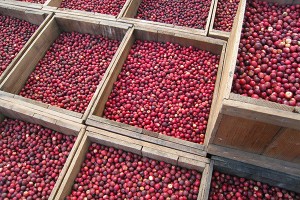
Campaign Ends May 28th!
Starvation Alley cranberry farm & juice company is raising funds for a high-volume juice press and bottling line that will help scale its juice production to 6X the current capacity. Over the past three years, Starvation Alley has become the go to source for Organic cranberries in the Northwest. As Washington State’s one-and-only certified organic cranberry farm, Starvation Alley is not only growing sustainable, local fruit, but is making it possible for other Northwest farmers to join them. They buy fruit from two neighboring farms (that are half way through the rigorous 3-year process of converting to organic) to produce a 100% pure unsweetened cranberry juice that is unlike anything else you can find on the market. Recently, Starvation Alley repaid it’s first Community Sourced Capital loan of $12,000 for a hydraulic juice press. This loan helped Starvation Alley grow to add 2 new farmers as suppliers and an additional 5 jobs local to the PNW. With the added production capacity possible from this next stage of funding the farm will be able to continue to increase its positive impact in the farming community.
Starvation Alley’s production kitchen is located on the Long Beach Peninsula in Southwest, WA. and produces about 8,000 gallons of cranberry juice a year. “Starvation Alley” is a historic road on the Peninsula that was home to hard-working oyster and cranberry laborers. They kept the name as an ode to those that came before them. We hope you’ll consider participating Find the campaign page through Community Sourced Capital here.
Starvation Alley’s mission is to support local farmer livelihood. They do this by paying great prices and aiding in the tough transition from conventional to organic growing. This loan will help them reach their next business milestone of adding an additional local farmer and creating a killer retail product that’s available to Northwest consumers.
Harbour Pub serves Starvation Alley cranberry juice exclusively and adds whole berries to its relishes and salad specials. Help us to help them!
The Weirdest Holidays You Never Knew Existed
May 14th, 2015

Holidays are wonderful. They bring a sense of community, anticipation, joy, and creativity into what would otherwise be just another day, week, month, or season. We celebrate birthdays, parents, children, veterans, love, patriotism, leprechauns, ghosts and goblins—wait, what? As credible as most recognized holidays are, we still tend to get a little weird when it comes to what—and how—we celebrate. Seeing as summer is a stretch of the year with fewer nationally recognized holidays, here is an all-encompassing list of bizarre holidays we can all look forward to (and maybe start a new, weird holiday tradition of your own):
May 16: National Sea Monkey Day—fun fact, Sea Monkeys have three eyes and breathe through their feet! Celebrate these strange, playful brine shrimp.
June 6: National Yo-Yo Day—it’s believed that the Yo-Yo was first invented in Ancient Greece. Today is the one day of the year where you’re not a weirdo for “walking the dog” till the sun goes down. Take advantage!
June 18: International Picnic Day—what was once a pastime for the Victorian bourgeoisie is now everyone’s favorite way to celebrate food in the great outdoors. Bon appetit!
June 25: National Catfish Day—President Ronald Reagan designated this holiday in 1987. We are serious about our catfish in this country. Who’s got my cornmeal?
July 2: I Forgot Day—a chance to make up for forgotten birthdays, anniversaries, or even the days you may forget in the future! Apologize belatedly or in advance on this glorious occasion.
July 7: National Strawberry Sundae Day, Macaroni Day, and Tell the Truth Day—be honest, who ate all of my macaroni and ice cream?
July 22: National Hammock Day—a reminder to slow down, breathe easy, and enjoy life: relaxxx.
August 7: National Lighthouse Day—an act that was approved by Congress in 1789 to gather support for the “establishment of lighthouses, beacons, buoys, and public piers.”
August 13: Left Handers Day—raise awareness of the everyday issues that lefties face in a world designed for right-handers. “I may be left-handed, but I’m always right!”
August 20: National Radio Day—we’ve all got’m, we all use’m. Celebrate them today!
August 31: National Trail Mix Day—also known as National Pacific Northwesterners’ Day. Just kidding. But seriously…
September 5: National Cheese Pizza Day—THERE IS A GOD.
September 15: National “Make A Hat” Day—a beloved holiday recognized by teachers of our little ones. Plus, why not?
September 22: Elephant Appreciation Day—female elephants are pregnant for almost two full years. C’mon.
And, if you’re really into this, the following list has got you covered until the new year! Any reason to celebrate, right?
October 3: Techies Day
October 17: “Wear Something Gaudy” Day
October 25: “Punk For a Day” Day
November 3: National Sandwih Day
November 15: Clean Out Your Refrigerator Day
November 29: Square Dance Day
December 4: “Wear Brown Shoes” Day
December 9: National Pastry Day—ummm, yes? Enough said!
December 18: “Bake Cookies” Day
Contributed by Christine St. Pierre
Hope You Had a Grand Mothers’ Day
May 11th, 2015
Contributed By Christine St. Pierre
The day has come, the one we have set aside to express our gratitude and love for our mothers. Of course, every day is Mother’s Day, but, today especially, is when we show her how amazed and inspired and humbled we are by her. Purchasing a gift can do a lot of things, but anyone can buy anything. This year, write her something that expresses her importance. If she’s anything like my mother, she’ll say, “Oh, honey, your love is all I need on Mother’s Day,” which she probably believes—until she reads the incredible poem you wrote.
Many of you talented artists, thinkers, writers, do-ers already have Mother’s Day covered. I get that. You’ve made the breakfast, picked the flowers, planned the picnic, arranged the surprise, wrapped the gifts, called in the reservation. That doesn’t mean you’re done! A poem can be slipped behind her morning coffee mug, under her pillow, placed on her dashboard—are you writing these ideas down?
A poem tomorrow morning, next weekend, or next month will express your gratitude for her life’s work just the same as it will today. So, read the following poems that I wrote to generate some themes or ideas, and, if you’d like, you can use them as a template to which you can add your own memories and connections to the mothers in your life! Happy writing. And Happy Mother’s Day!
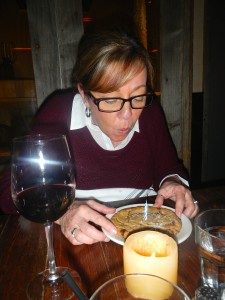
Poem 1:
To Every Mother
Who carried life inside her; who devoted her body to a child she loved unconditionally; who walked slowly, one arm resting on top of her round belly, the other cradling it tenderly: thank you.
To every mother who used her hand to wipe spit-up; who gets out the video camera instead of the cleaning supplies; who marks the door frame inch by inch, every year, as her little one grows into a six foot tall eating and sleeping machine: thank you.
To every mother whose wildest dream in life is to watch her child succeed in their own; who fights back tears when the old family car is loaded to the brim, headed out into the world; who thinks about her child every single moment of every single day: thank you.
To every mother: thank you.

Poem 2:
Sunflower Mother
I am
moss and mud eyes, depths unseen;
your reflection in the rippling river
beneath the forest canopy.
I am
veins, risen and pulsing
atop earth-soaked hands; the
wild mountain ranges,
fertile valleys,
barren deserts
stretched infinitely between us.
I am
warmth from the night’s fire;
my head pressed into your chest;
walking to the rhythm of your heartbeat
as I venture beyond, unafraid, alone.
But never alone
because
I am
loved and
surrounded by
you.
Local WEEED Scene On the Rise
April 27th, 2015
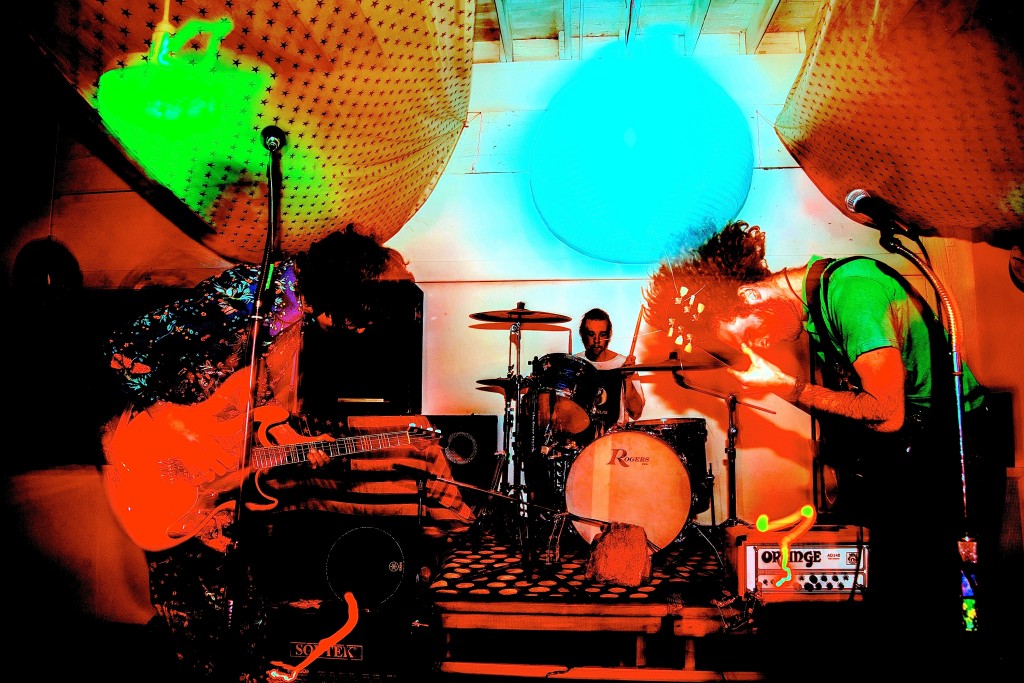 by Christine St.Pierre
by Christine St.Pierre
WEEED is having quite the transformative year—and no, I’m not talking about the recently legalized medicinal herb, although that industry’s not doing too bad, either. I’m following the smoke trails of Bainbridge Island’s homegrown stoner rock band, WEEED, as they blaze through Seattle’s music scene after nearly a decade of grounding their sound in various garages and barns and dimly lit venues along the west coast.
The band’s origin story is like many others: two middle school-aged neighbors (Mitch Fosnaugh and Gabrieal Seaver) develop a deep friendship over their passion for exploring the depths of music. But, unlike most middle school bands that sprout and whither, their story doesn’t end there. Beneath the tall trees and low-lying clouds of Bainbridge Island, a patchwork band of young rockers formed, with the addition of Charlie Powers (former bassist) and John Goodhue (drums), and with it grew the island’s signature music scene, with deep roots that have spread as far north as Bellingham and on south to Portland and San Francisco.
While WEEED is still motivated by original stoner rock gurus like Black Sabbath, Electric Wizard, Ravi Shankar, and Led Zeppelin, they also draw inspiration from the “triple gem” of Buddhism. From the words of bassist/vocalist Gabriel Seaver:
“One who seeks enlightenment can take refuge in three gems of Buddhism and is spiritually fed, inspired and influenced by their qualities. The first gem is the Buddha, the enlightened one, who has attained the perfect state. This can be related to the musicians who inspire us, having attained the heights of mastery.
The second gem is the dhamma, which is the path to enlightenment, the energy that teaches and draws one towards liberation. This can be related to music itself. The act of participating in music is healing, transformational and purifying. In this way it can be seen as a spiritual practice and is self-fulfilling.
The third gem is the sangha, which is the spiritual community. In Buddhism, the sangha is made up of everyone who has attained enlightenment, as well as everyone who is walking the path to enlightenment, especially those walking the path that you have encountered or know personally. The musical community that we have grown with has been huge in keeping us together and dedicated to this journey. We feel infinitely blessed by such a tight, supportive, loving, and truly special community of friends.”
Fostering a “goofy attitude and childlike wonder and play,” WEEED transcends traditional rock by evoking a meditative rhythm laced with experimental guitar, hypnotic drums, and deep, reverberating bass that awakens body, mind, and soul, a sound they identify as “shanghadelic,” seeking to evoke a sense of expansion with the audience as well as within themselves in order to surpass “identification with the mind/body/ego/form/content.” Their mission is well underway; watching WEEED share their live music with others is a meditative experience, where one can simultaneously get lost and found.
“Through the vibrations of music,” Seaver explains, “we hope to fill our audience with love.” And the love is felt, as friends gather to blast-off into an alternate dimension of sound and community, bending and twisting their bodies in a symbiotic emergence while the band thrashes electric onstage beneath rainbow-print suspenders and wild, disheveled hair.
Finding them onstage is about to become a lot easier, too. In the past, magical barn/garage/house shows and small intimate venues hosted a fortunate audience that thrives on community collaboration. More recently, the band signed with Illuminasty Records, a label based out of Portland, San Francisco, and New York, and has plans for a six-week US tour that coincides with the release of their new double LP “Our Guru Brings Us To The Black Master Sabbath,” so pay attention WA, CA, ID, OR, UT, MT, MO, IL, NY, NC, MN—WEEED’s comin’ to town.
Click here to experience some of their jams, or head here to read an entertaining and informative interview by Seattle Weekly.